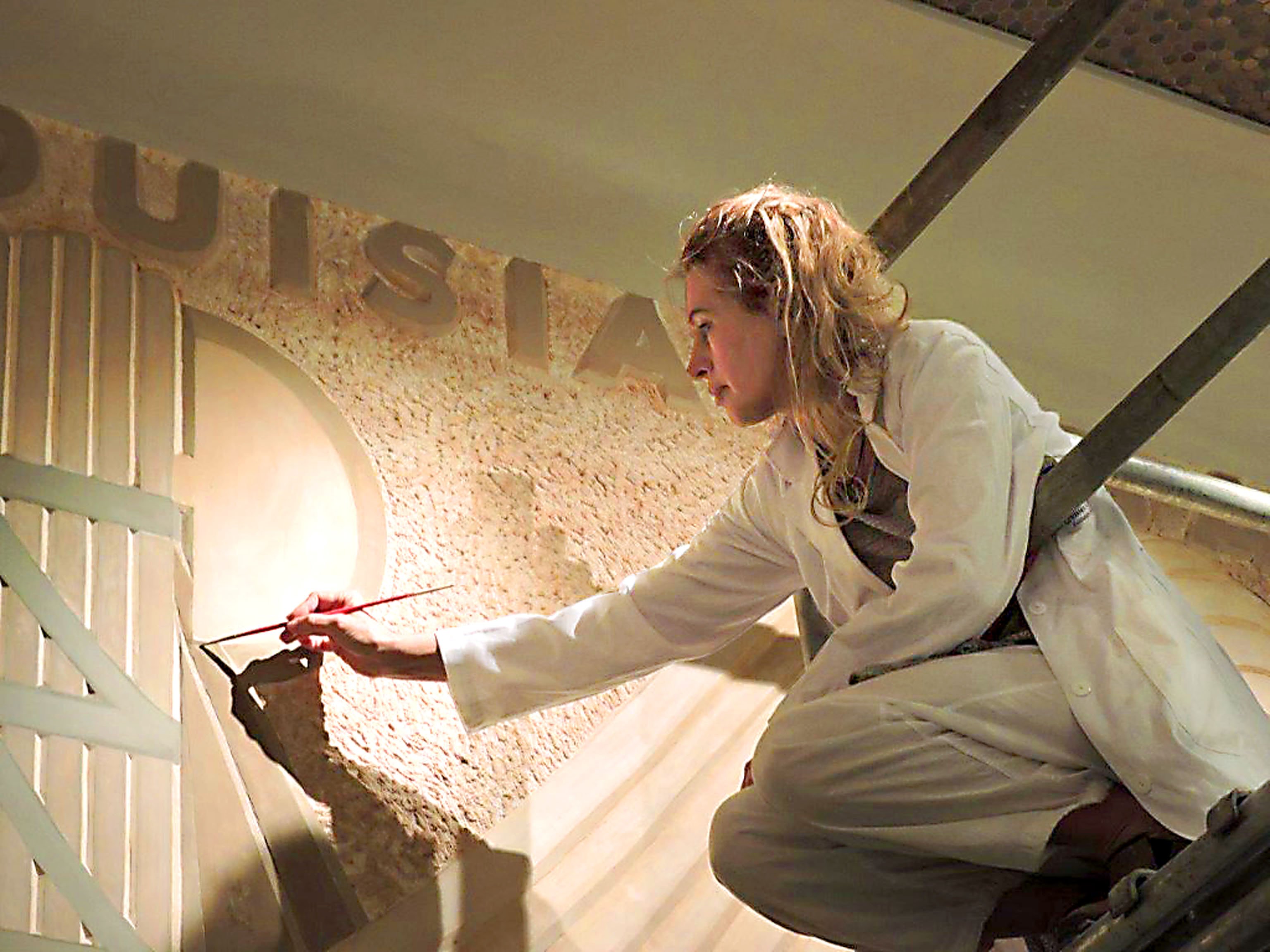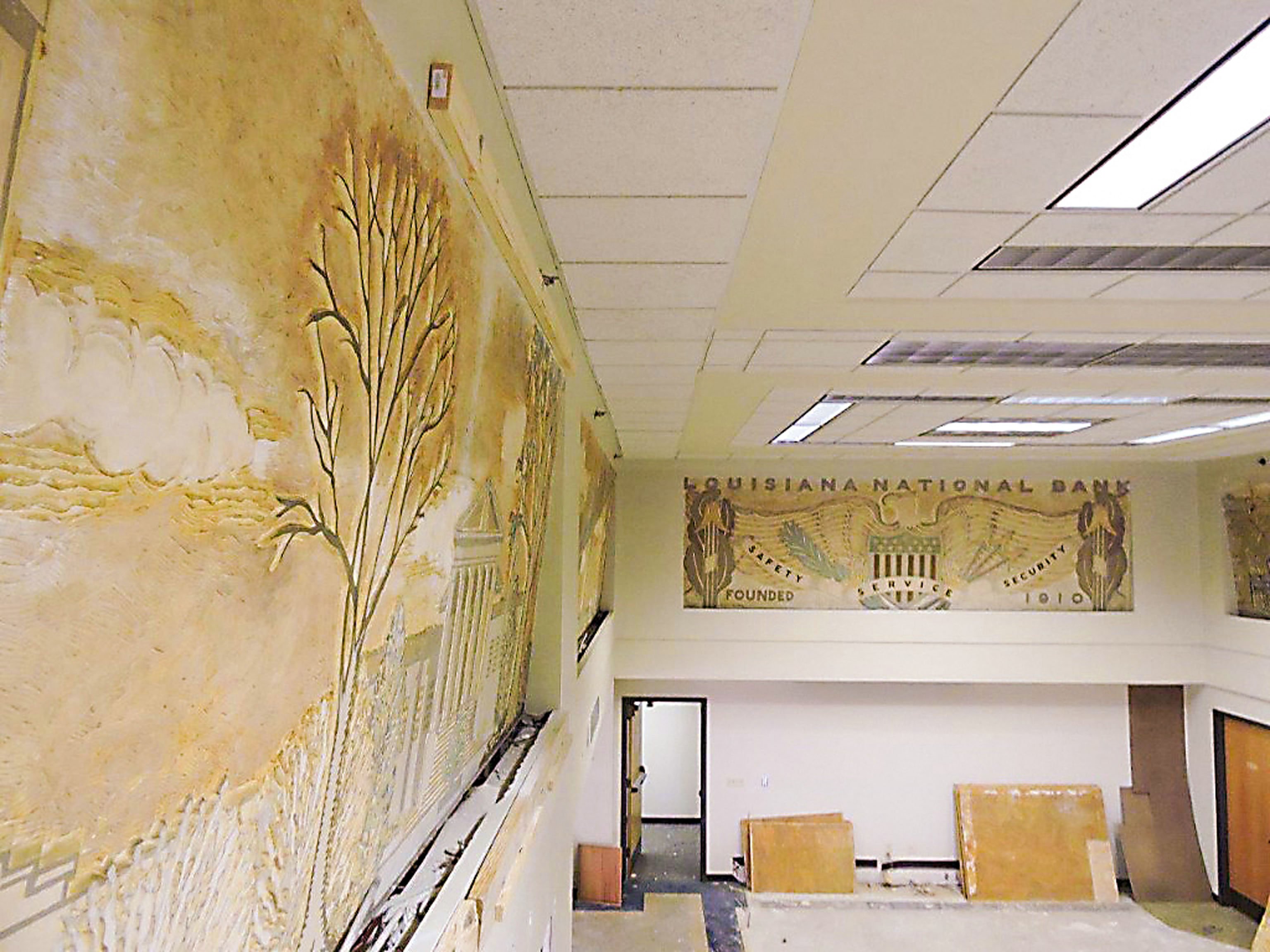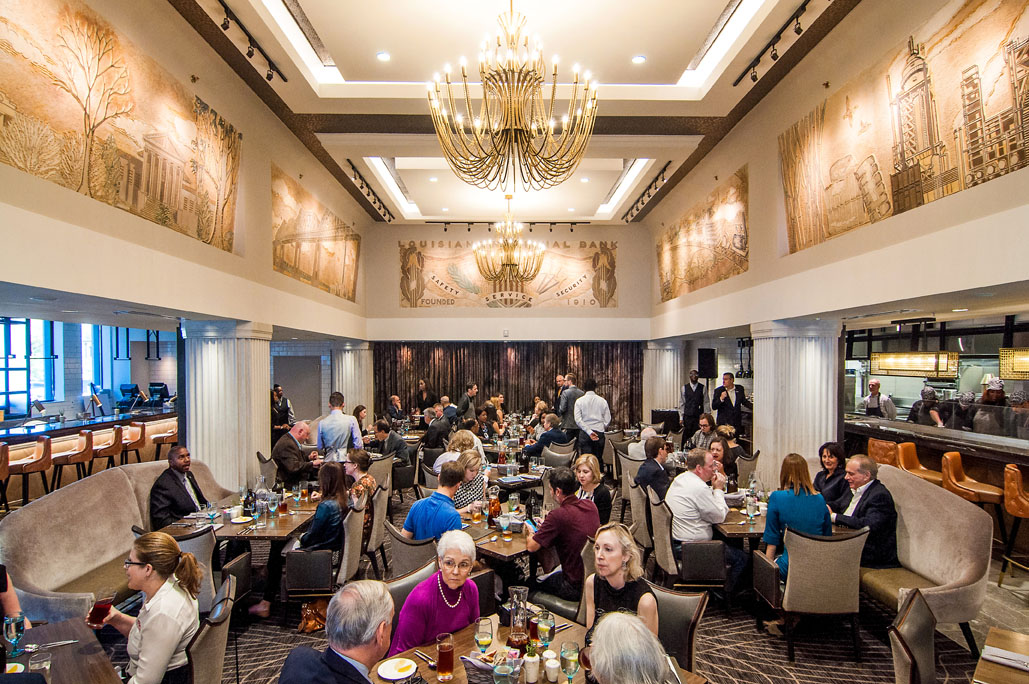If walls could talk: Watermark Hotel murals bring history to life
For one full month this summer, art conservator Elise Grenier painstakingly worked from platforms and scaffolds to preserve the historic murals that have hung high above the lobby of the former Louisiana National Bank building in downtown Baton Rouge for more than half a century. Bringing the murals’ eight 20-foot-wide sculptural panels back to their original beauty has been integral in preserving the building’s historical ties to the city amid a recent renovation that has turned the property into a contemporary luxury hotel called the Watermark Baton Rouge.
“I consider a lot of the building’s art as kind of a gift,” says building developer Mike Wampold, who preserved the property’s Art Deco design and much of the building’s original floors, marble staircase, stonework and bank vaults. “It was a gift to us, in that building, and a responsibility for us to be good stewards of and to restore and take care of.”

The bas-relief murals, created by renowned New Orleans artist Angela Gregory to embellish the bank lobby during a 1949 renovation, depict images important to the state’s economy, including oil refineries, sugar cane and the Mississippi River, as well as the state seal and the seal of Louisiana National Bank.
While Grenier, owner of Grenier Conservation, says the mural panels were in good condition, some damage had been inflicted by moisture, airborne particles and time itself. She found it gratifying to remove the mural’s protective covering—put up at her request during earlier stages of the building’s renovation to protect the artwork—and get up close and personal with Gregory’s work.
“You can see pencil marks, the chisel marks, things that people can’t ever see” says Grenier. “No one else will ever see it. You feel privileged. It’s a very intimate kind of experience. You almost know the artist’s secrets.”
Wampold sought to restore the artwork to ensure that the building’s history, and the essence of the artists themselves, carries on well into the future.
“I believe in the spirits of the artists,” says Wampold. “I think if we’re kind to the spirits then the spirits will be kind to us.”

And the history of the building is significant. The 12-story property overlooking the Mississippi River, originally Louisiana National Bank headquarters, became the city’s first skyscraper in 1925. Nearly 50 years later, the state purchased the property to house higher education offices and the Louisiana Board of Regents and renamed it the State Office Building. Wampold acquired the building in 2014 after the state put it up for sale.
In October, the Watermark Baton Rouge, part of Marriott International’s luxury Autograph Collection Hotels brand, celebrated its grand opening.
The hotel’s premier restaurant, The Gregory, is named for the original artist and is located beneath the murals in the hotel lobby, lending the space a “museum-like quality”, according to Wampold. Ann Connelly, owner of Ann Connelly Fine Art, served as an art consultant to the Watermark and noted that incorporating Gregory’s artwork into the renovation was paramount due to her prominence as an international sculptor. Using Gregory’s artwork as inspiration, Wampold sought to “weave that storyline” throughout the hotel as a way to connect the past with the present, says Connelly.

“This is a very unusual artform and it kind of brings to my mind Egyptian art,” says Grenier, maintaining that bas-relief murals are a unique medium requiring a talented artist to get the perspective exactly right. “Low relief and then it’s painted. I really can’t think of many examples of this. It’s very uncommon.”
Grenier herself is an expert in her field, with a master’s degree in art history from LSU and 30 years of experience in Italy. She has brought Gregory’s murals to “near perfect condition,” according to Wampold.
“When you work on something that’s only 50, 60, 70, 100 years old, it may not seem that old. But it will be,” says Grenier. “Artwork like this is practically eternal. It’s going to outlast me and you and all of us. It will be there for generations.”












